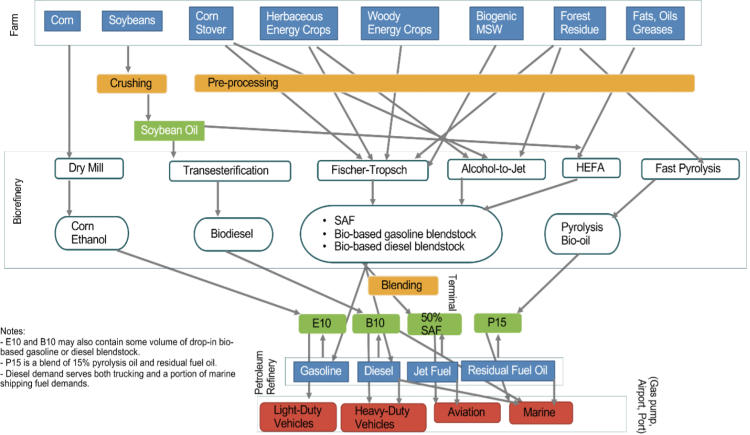This dataset contains national summary data on agricultural crop and residue production, which include agricultural crop, agricultural residue, herbaceous energy crop, and woody energy crop.
Each tab in the Excel file contains information corresponding to a resource category, and within each tab, there is a structured table presenting resource production (in dry short ton) by offered price (in USD per dry short ton) across multiple scenarios (mature-market low, mature-market medium, and mature-market high). Consistent with the 2023 Billion-Ton report for agricultural resources, these scenarios represent potential production scenarios for 2041.
List of the resources shown in this dataset:
- Agricultural crop: Barley, Corn, Cotton, Grain sorghum, Hay, Oats, Rice, Soybeans, Wheat
- Agricultural residue: Barley straw, Corn stover, Oats straw, Sorghum stubble, Wheat straw
- Herbaceous energy crop: Biomass sorghum, Energy cane, Miscanthus, Switchgrass
- Woody energy crop: Eucalyptus, Pine, Poplar, Willow

